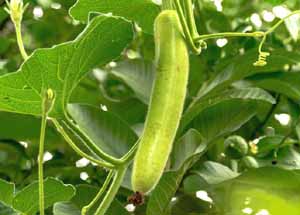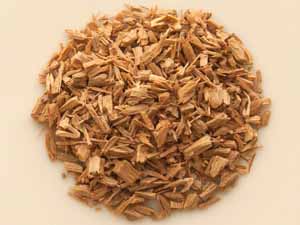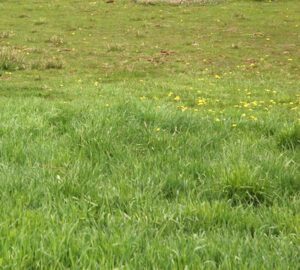Commercial coffee farming is a very old, common and popular business in many countries around the world. Coffee is among the most popular drinks throughout world and commercial production of coffee is profitable.
Coffee is actually a brewed drink prepared from roasted coffee beans, the seeds of berries from certain flowering plants in the Coffea genus.
The seeds are separated from the coffee fruit to produce a stable, raw product (unroasted green coffee). And then the seeds are roasted which transforms them into a consumable product (roasted coffee), which is ground into fine particles that are typically steeped in hot water before being filtered out, producing a cup of coffee.
Coffee is darkly colored, bitter, slightly acidic and has a stimulating effect in humans, primarily due to its caffeine content. It is one of the most popular drinks in the world and can be prepared and presented in a variety of ways.
It is usually served hot, although chilled or iced coffee is common. Sugar, sugar substitutes, milk or cream are often used to lessen the bitter taste or enhance the flavor.
It may be served with may different food items such as coffee cake or another sweet dessert, like doughnuts. A commercial establishment that sells prepared coffee beverages is known as a coffeehouse or coffee shop.
Clinical research indicates that moderate coffee consumption is benign or mildly beneficial as a stimulant in healthy adults, with continuing research on whether long-term consumption reduces the risk of some diseases, although some of the long-term studies are of questionable credibility.[1]
World production of green coffee beans was 175,647,000 60 kg bags, led by Brazil with 39% of the total in the year of 2020. Other major coffee producing countries are Vietnam, Indonesia and Colombia.
As of 2021, no synthetic coffee products are publicly available but multiple bioeconomy companies have reportedly produced first batches that are highly similar on the molecular level and are close to commercialization.
However, commercial coffee farming has many advantages and is a very good and profitable business. Once a coffee orchard is established, it can produce coffee beans up to 55 to 60 years.
Generally, coffee plants start growing fruits beans/cherries after 3 to 4 years of planting. And commercial coffee farming is an excellent business and you can make high profits under ideal crop practices.
How to Start Coffee Farming Business?
Starting commercial coffee farming business is just like starting other crop farming business. But it require some knowledge and experience. So, we recommend having practical knowledge or training before starting this business.

Learning from local experts is always a good idea. However, here we are trying to describe more about the steps of starting and operating a successful coffee farming business from planting, caring to harvesting and marketing.
Step 1. Good Site Selection
Coffee plants can be grown on a wide range of soil types. They can be grown on sandy loam soil with good organic matter to virgin soils on steep mountain slopes or almost flat lands.
One thing you must consider is the water balance of soil, as this can play a vital role in coffee production. If you are willing to start commercial coffee farming, then you should conduct a soil testing.
If any soil nutrient deficiencies are noticed, then you should supplement those nutrients before starting a coffee garden. Ideal pH level of the land should be between 5.0 and 6.0 for maximum production.
Step 2. Land Preparation
This is a very important part of commercial coffee farming business. You must have to prepare the land very well by giving 4 to 5 ploghings and harrowing to bring the soil to fine tilth stage.
Remove any stones, debris and weeds from previous crop while preparing the land. And try to add as much organic contents as you can while preparing the land.
Step 3. Climate Requirement
Ideal climatic conditions for growing coffee plants are related to temperature and rainfall. Temperatures in the range of 23°C and 28°C with rainfall incidence in the range of 60 to 80 inches are ideal for best growth of the plants.
Cold temperatures closer to freezing conditions are not suitable for coffee farming. Providing irrigation facilities is required where the rainfall is less than 40 inches. Relative humidity for Arabica ranges 70–80% while for Robusta it ranges 80–90%.
Step 4. Propagation
Coffee crop is propagated by both seeds and cuttings. Selection of quality seeds is very important in coffee farming business.
Generally, it takes about 30 to 40 days for germination after sowing in the field or nursery beds. And then the seedlings should be uprooted and transplanted into polythene bags in nursery beds at a spacing of 25cm.
Seed Propagation
Coffee Arabica trees are self-pollinating and usually, Arabica varieties will produce true type plants from seed propagation.
Vegetative Propagation
You should select high yielding and disease free good quality cuttings in vegetative propagation.
Step 5. Purchase Seeds/Cuttings
If you can’t produce the seedlings of your own, then you can purchase the seeds or cuttings form your local suppliers. If you are planning to by from nurseries, make sure to choose certified and high-quality nurseries for coffee planting materials.
Step 6. Planting
Planting method and distance vary from variety to variety and it mainly depends on topography and soil fertility. Generally, 2m x 3m spacing is followed for Coffee Arabica, and 3m x 3m is followed for Coffee Robusta.
Straight row planting with an east to west orientation is preferred layout for growing coffee plants.
The coffee plants are usually planted during the spring season or just before the rainy season as this crop require moist soil conditions and cool climate for better establishment and growth.
For better growth of the seedling, the space between the rows should be between 15cm and 20cm. And within the rows, coffee seeds should be placed at 3cm to 5cm distance with 0.5cm to 1cm depth flat side down.
After growing the seedlings in nursery bags, 6 to 7 months old seedlings having about 20 to 25cm height should be transported and transplanted in the main field.
Prepare the pits before transplanting the seedlings. It will be better if you dig the pit 3 months before transplanting the seedlings in the main field. Ideal pit size is 50cm x 50cm x 50cm.

Step 7. Caring
Coffee plants are generally strong and very hardy. So you don’t have to worry much about caring the plants. Although, taking good care of the plants will ensure good growth and better production
Fertilizing
Timely application of fertilizers and manures ensure good growth of the plants and maximum coffee production. Add adequate organic fertilizers while preparing the soil. Contact a local expert for having better recommendations about subsequent fertilization.
Watering/Irrigation
Actually, the frequency of watering or irrigation for commercial coffee farming depends on the type of soil, moisture level and also plant age and climate.
Many irrigation methods available to choose from such as drip irrigation, microjet, basin and sprinkler irrigation. Among all these methods, drip irrigation is the best method for best utilization of water and fertilizers.
Under irrigated conditions, each coffee plant require around 50 to 55 mm water and this should be applied before transplanting. Subsequent irrigation of 25mm should be provided at 8 to 10 days interval.
Overwatering can result in plant rot and fungal diseases in the coffee plants. So, avoid too much wetness but ensure moist soil. The thumb rule is to provide 2 irrigation in a week in dry climatic conditions, and 1 irrigation per week in the cool winter season.
Mulching
Mulching helps to control weeds and retain moisture into the soil. And organic mulching also enrich the soil, moderate of excessive soil temperature and improves soil texture. Use organic materials for mulching.
Weed Control
Weeds consume nutrients from the soil, so it’s important to control/remove them. Weed control can be done during the initial years. And chemical weedicides (such as Dalapon) can be used for controlling grasses.
Pruning
Pruning of coffee plants include removal of dried, dead branches and any unhealthy branches. Pruning includes part of pole pruning and this may be done once in 4 years to bring back to good shape and control unwanted shoots. Ensure this task is done immediately after harvesting.
Blooming and maturing
Blooming is the time when coffee plants bloom with white flowers which last for about 3–4 days (termed “evanescent” period) before they mature into seeds. When coffee plantations are in full bloom it is a delightful sight to watch.
The time period between blooming and maturing of the fruit varies appreciably with the variety and the climate; for the Arabica, it is about seven months, and for the Robusta, about nine months. The fruit is gathered by hand when it is fully ripe and red-purple in colour.
Step 8. Control Pests and Diseases
Like many other commercial crops, the coffee plants are also susceptible to many pests and diseases problem.
Pests
Common pests or insects of the coffee plants are antestia stink bug, black coffee stem borer, coffeeberry moth, grey coffee snout beetle, leafminer, mealybug, white stem borer, veriegated coffee bug etc.
Diseases
And common diseases of the coffee plants are american leaf spot, armillaria mellea, coffee leaf rust, coffee berry disease, cercospora spot, rosellinia bunodes, tracheomycosis wilt, root rot etc.
Contact your local department of horticulture for learning more about the prevention methods of pests and diseases of coffee plants.
Step 9. Harvesting
Coffee beans/cherries start bearing from the 3rd year onward after transplanting in the main field. But you can expect good yield from the 5th year. But the most important and pleasuring part is, the coffee plantation continues to yield up to 50 to 55 years.
Generally, you can pick ripe berries of the coffee plant during the month of October to February. But it is recommended to pick well-ripened and formed coffee berries during the month of December.
After harvesting the crop, there are some post-harvesting tasks which are drying the fruits, grading the fruits, storage and transportation of the final produce.

Yield
It’s very difficult to tell the exact number. Because it depends on many factors such as climate, soil type, varieties, rainfall/irrigation and good garden management practices. But under ideal conditions you can expect 400 to 700 kg/ha for Coffee Arabica, and between 350 and 750 kg/ha in Coffee Robusta.
Step 10. Marketing
This is the most important part of commercial coffee farming business. You will be able to make huge profits if your marketing strategies are good. So, we recommend determining your marketing strategies before starting this business.
These are the common ways and steps for starting and operating a successful coffee farming business. Hope this detailed guide about coffee production has helped you! Good luck and may God bless you!






